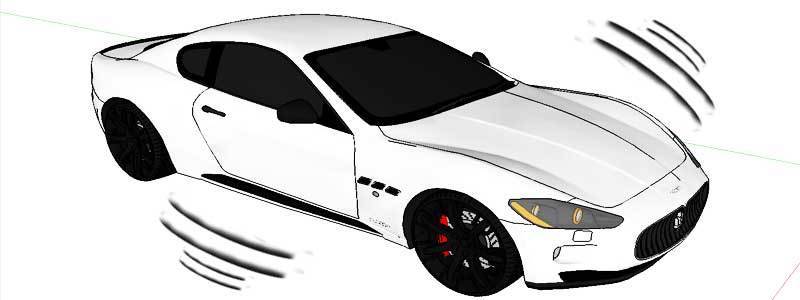
If you have owned a car for some years, you understand that it sometimes develops mechanical problems.
Some of these issues will catch you off guard. You will not see complications as they build. Instead, you only recognize them when it is too late to salvage the situation. Owning a car is a test of responsibility; many may fail.
You have probably experienced a car shaking when accelerating. Different vibrations will mean different things. And you should know this by now.
No good news should be expected when your vehicle starts to vibrate. It does not matter if the vibrations come after you accelerate, while in motion, or if the car is idle.
11 Reasons Your Car Shakes When Accelerating
Vibrations have a habit of creeping up on you. You feel them, you ignore, and one day you wonder how simple things become critical.
Always seek a professional opinion from someone with extensive knowledge on the matter. Most probably your auto service person. But if you have owned a car for so long, some of these common issues you can diagnose and solve yourself.
Getting to the source of problems at the earliest stage will save you money. It will do so both in the form of repairs and replacements of damaged engine components.
Sometimes the issues are simple like tire rotation. Sometimes they are bloated like steering complications and suspension. You should be able to tell which vibrations are sinister and which ones are manageable.
Below are 11 clear reasons why your car shakes when accelerating.
Engine Complications
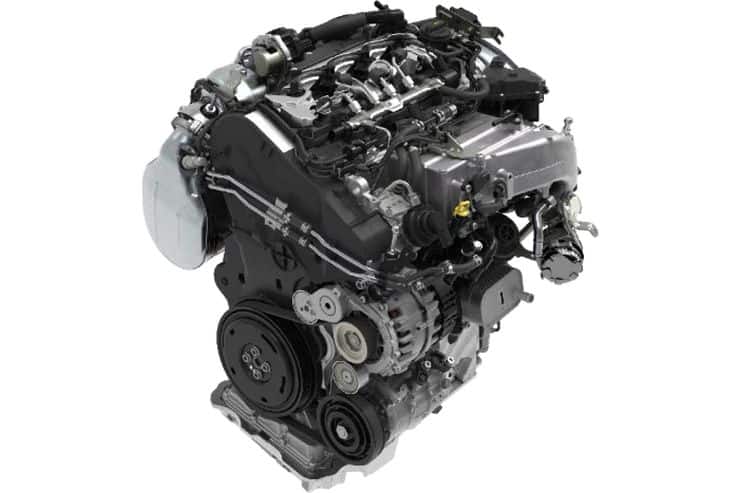
Most vibration complications start from the engine. Sometimes it’s a shudder other times a shake from your engine.
When you experience such vibrations, it may be a sign that your engine is deficient of either air, spark, or fuel. Your engine needs these to run smoothly.
Signs to look out for when your engine shakes
- Your car jerk when you accelerate
- Shaking as though you’re driving over highway rumble strips in a high speed.
- Car drives well, but after some time it starts to shake.
The above signs should be enough to compel you to check your spark plugs. While at it, check extensively if the spark plug wires connect in their proper order. Perhaps it’s the spark plugs or wires that may need replacing.
Another reason for an engine shake may be the state of your engine oil. If the oil filter or your air filter is dirty or clogged, your engine will starve of fuel or oxygen as needed.
Filters are not expensive and not complicated to replace. Use the manufacturer’s recommendations to ensure you change them at timely intervals.
Defective motor mounts

You may know them as engine mounts. They help to secure your engine to the body of your car. You should have a poke under the hood of your vehicle.
You will see that your engine appears to be wedged in tightly. But it is not. Your car’s engine is secured to the chassis by the engine mounts.
Engine mounts have different appearances. They are determined by the shape, size, and strength of your car. Their material comprises of rubber and metal.
The structure of the metal holds everything in place as the rubber absorbs all vibrations coming from the engine.
You can find them between the frame and the engine. They also differ from one vehicle to another. The engine gets mount to different structural components based on the car’s design.
Despite their rich structural integrity, engine mounts need to be checked and replaced periodically.
When they get worn out, they no longer hold tight, and the rubber can’t absorb the vibrations. It’s only natural that your car will shake from the front.
Brakes

Your car may be okay but only shakes when you apply the brakes. It is a bad sign. It could mean your vehicle has defective brake rotors.
The brake rotor is a silver disc-like component for cars with a disc brake system. The rotor suffers heavy wear and tear.
They have a huge task, and when they break, your vehicle may start shaking. The cause is mainly overheating each time your car comes to a stop. The heat warps the discs.
The discs should be uniformly flat. When it is not the brake pads, and calipers squeeze on the deformed brake pads making the car come to a stop. The grip is uneven, and that is why your car will vibrate when it comes to a halt.
You should take your car to your auto service shop immediately and have your braking system checked.
Axle problem
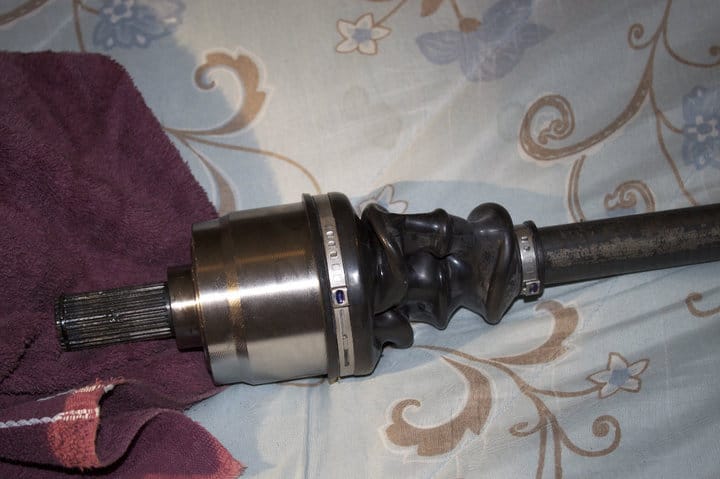
Vehicles are made up of so many rotating parts. All of these parts must perform at optimum capacity within specific parameters and tolerances.
Axles get bent easily from minor collisions. When this happens, your axle may cause your car to shake. The intensity of the vibrations will also increase when you accelerate.
Another related issue may be the driveshaft. It is the part that spins rapidly to transfer power from the engine to the rear wheel axles in rear-wheel-drive cars.
You should check to see if they are bent. If so, that could be the reason your vehicle vibrates when you accelerate.
Sometimes the problem is in the constant velocity joints. They are boot like coverings found on the end of the drive axles.
They are only intact when the rubber is not worn out, the clamps are secure, and there is no lubricant making its way out. If the boots are torn, then all dirt from the road gets in the joints and will damage the moving parts.
If your car is a front-wheel drive, faulty CV joints mean you will replace them together with the axles.
Steering complications
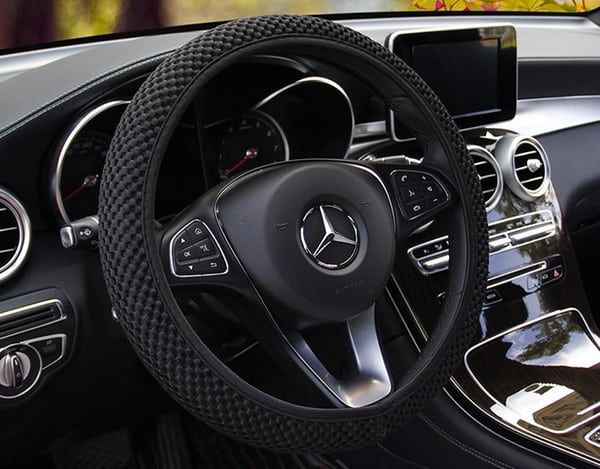
When you drive an old car and then drive a new vehicle (of the same model) immediately, you will realize a slight difference in the steering wheels. The new car steering wheel will be swifter and responsive than the old one.
It only applies when you are comparing the same cars. It will not be the same when you compare a new limousine with an old sports car. Different vehicles need different steering capabilities. Some are more superior than others.
This example proves that steering wheels wear out with time. It will be difficult for any driver to notice the changes in their steering wheel’s response. It is because it degrades gradually.
Your steering wheel connects to the four wheels of your cars. So many joints and moving parts are required to perform efficiently at high speeds. If they wear out, they reduce your steering wheels’ function.
Even though you will still steer, the damaged joints will cause vibrations.
The steering wheel components are complicated problems. You should leave these to professionals. However, make sure you sort out any steering complications as soon as you notice them.
Power steering

It is easy to know the source of the problem if your car only shakes when you are turning. There could only be one problem when this happens. It means you are having issues with your power steering system.
To confirm if this is the case. Have a look at the hoses of your power steering. Check for leaks.
Look further at the reservoir for the steering fluid. If it is over, make sure you replenish it according to most auto service experts.
Your car should vibrate when you turn the power steering wheel even when the vehicle is not in motion. That is one way for you to know the problem is in the power steering wheel.
Unbalanced wheels

Sometimes the issue is not the tires making your car shake. Your car needs proper wheel balancing.
When you drive straight without holding the steering wheel, your car should go straight. If your vehicle turns on its leaning toward one direction, the wheels of your truck need an alignment.
Your car uses wheel weights to keep your wheels balanced. To see them turn your car wheels to face inside when parked.
Then look for metal squares attached to the inside of your wheel. This part often collects lots of mud and debris. Be sure to clean it regularly.
Unbalanced wheels will always make your car to vibrate. To get them balanced is not something you can do yourself. However, it is inexpensive to balance them. Take your vehicle to the nearest auto repair shop and let them correct the imbalance.
Bent wheels
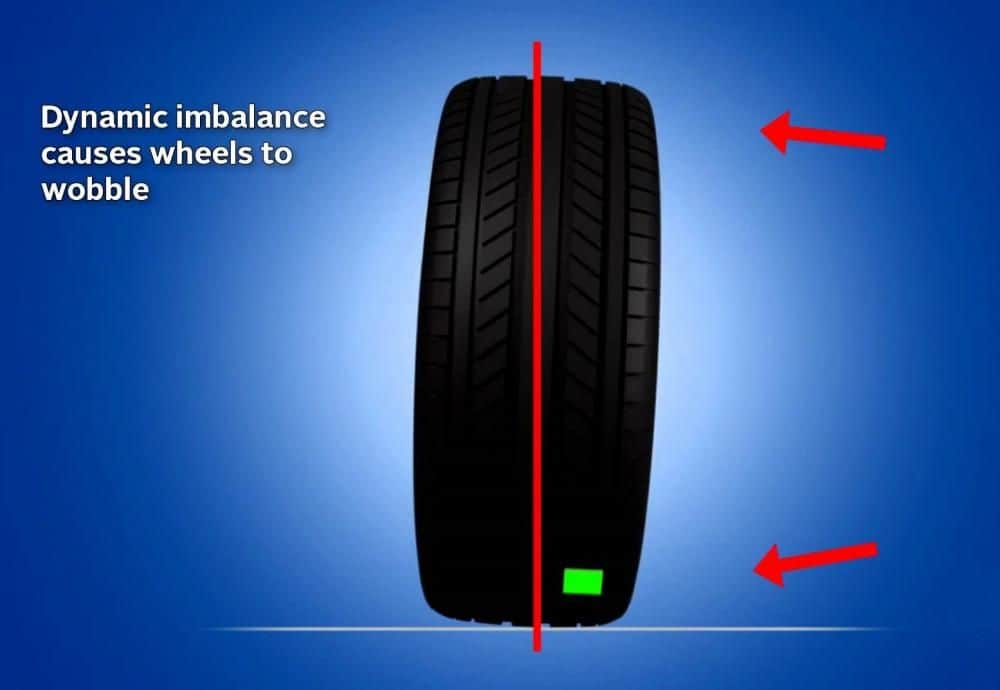
Potholes and poor roads are bad news to your wheels. Sometimes we cannot avoid them, and we end up hitting them. Potholes can bend your wheels. When this happens, your wheels will vibrate. It is so common. Always drive carefully when on an unfamiliar road.
When it comes to damaged wheels, run out is a problem you should be aware of. Run out means when your wheel spins, it moves from perfectly circular motion. It should not happen. Wheel experts have special instruments to find out if your car has a runout. If so, they can correct it as well.
Your run out should not be more than half an inch. If this is the case, then most often, the solution is getting new wheels for your car. Wheels are so sensitive. When you sense any issues, you should rectify before they cause harm to you or damage to the vehicle.
Bent wheels will make your car shake regardless of the speed.
From wheels to tires- Low profile tires
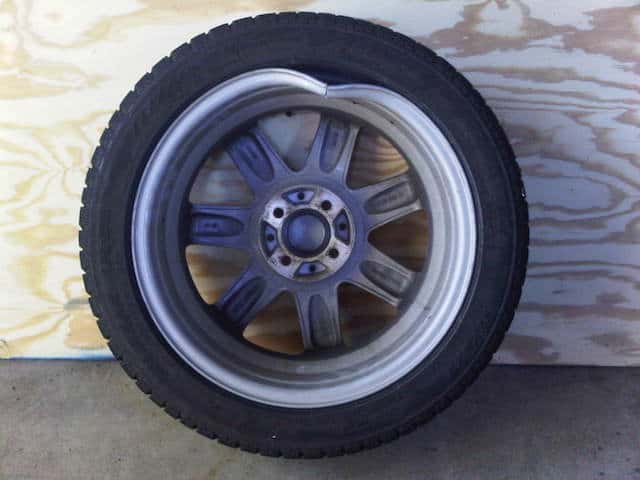
Tires are also part of the wheels’ problems that causes your car to shake. Low profile tires are also called low rolling resistance.
These tires are becoming popular, especially in hybrid vehicles. The advantage of using a low-profile tire is linked to fuel economy. It appears like a marketing standpoint, but it is the truth.
Low profile tires will reduce the resistance and drag of your car. Most drivers do not enjoy riding on these tires as they offer minimal absorption of bump impacts.
Low profile tires are thinner than ordinary tires. They are harder and have less material to separate your car from the imperfections of the road. Even though they are called high-performance tires, if you have them installed, they may be the cause of vibrations.
But before you determine the vibrations are caused by the low-profile tires, eliminate other problems first.
Worn out tires
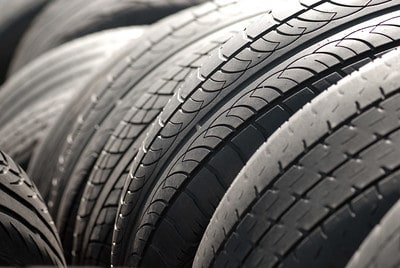
Tires get worn out fast because they are the only part of your car that always comes into contact with different roads.
Your tires need to be right all the time. If the tires wear out, your drives will be very uncomfortable. Tires have such a lifespan.
There are so many reasons why bad tires will make your car shake. Listed below are some of the cases.
- Your tire’s tread has separated. It means you will have to replace the tires.
- The tire wear of your tires is uneven. You can solve this by rotating your tires.
- Your tires are no longer round, mean they are “out of round.” It means you will need new tires.
- The pressure of your tires has run low. You need to fill them up as recommended by your car’s manufacturer.
- Your tires are just old. You will need new tires.
Most of the tire complications come from getting worn out. The solution to worn-out tires is replacing them with new ones.
Lose Lugnuts
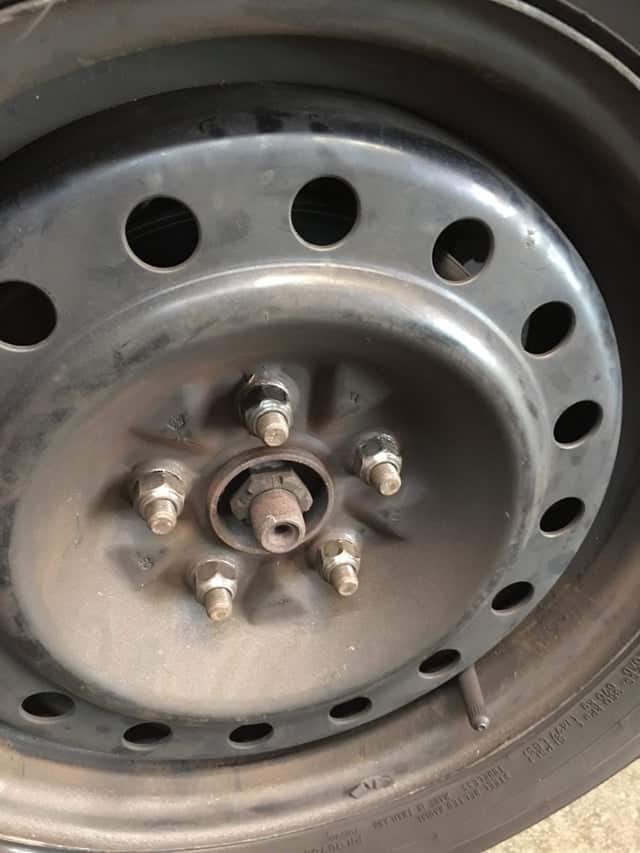
These help secure your tire on the wheel plate. Loose lug nuts are a severe case and should not be overlooked.
If they become loose, your car will start shaking when you are in motion. It can be quite risky. If your vehicle shakes because of loose lug nuts, you should tighten them immediately.
If you do not, your wheels may just run off when you are driving. It is never a good scene when such happens. You should never take a chance driving on wheels with loose lug nuts. Also, make sure to use the right lug nut size for your wheels.
Possible Solutions to Stop Your Car from Shaking
There are no one-stop solutions that will fix everything. Each of the cases mentioned above has more than one answer. Some of them are these.
Solutions for joints complications
To reach the CV joints, you must remove the driveshaft first. Then make a visual assessment. Check that the drive shaft is not bent. If it is, you will have to make a replacement. Check if the CV joints are well greased. If your mechanic notices any complication, ten both joints must be replaced.
Unbalanced tires
It is complicated if you are not an expert on auto repairs. But your mechanic can do this for you. The process entails the following.
- First, the tools needed are a jack, screwdrivers, lug nut wrench, and a balancer.
- Remove the wheel weights and then remove the wheels to clean them
- Balance the wheels in their spots then put back the weights.
- Recheck and readjust the wheels until they are back to their original position.
Clogged transmission filters
It refers to replacing the engine oil. The steps include
- Jacking up your car and securing before you crawl underneath it.
- Open the oil filter using the socket wrench.
- Drain the oil in the pan.
- Remove old bolts and gasket seals to clean as well
- Install a new oil filter. And put in new oil.
Spark plugs
When spark plugs wear out, your engine develops complications, especially during ignition.
If you suspect the vibrations are from your spark plugs. Open your hood and check under it. Measure the gaps and readjust them as necessary. Spark plugs are cheap and should cost less to replace.
Low transmission fluids
When changing your transmission oils, your engine should be off. Most people make the mistake of adding liquids when the car is running. This not appropriate.
Always add the right fluids by checking against your manufacturer’s instructions. Every engine has its specific fluids. Always use a funnel when replacing fluids to avoid an overfill. Return the dipstick after you have finished and lock it in its place with a latch.
Cost of Reparation
The cost of maintaining your car will rise as it gets old. The secret to paying low service maintenance fee is continuous service.
Waiting for the vital engine and structural components to serve up to their last days before replacing them is costly.
An average cost of service per year can be as low as $100. However, this depends on where you are driving and how you are using your car.
All engine complications and noises need fixing immediately they start. The cost increases with negligence.
Conclusion
Preventative maintenance will always make you one step ahead of your car problems. Always ensure that your car gets proper service to replace worn out parts. Change these parts before they cause damage to your engine.
Some of the complications need professional assistance to remedy while you can solve some by yourself. It is essential to know the difference. You can cause more damage to your car if you do not know how to install worn out parts.
The next time your car shakes when you are driving, you should identify the issue immediately and take the needed steps. If you don’t, it may lead to an accident or a costly replacement of the part, or all of the engine.
Always take your car for regular service to replace worn out parts.








